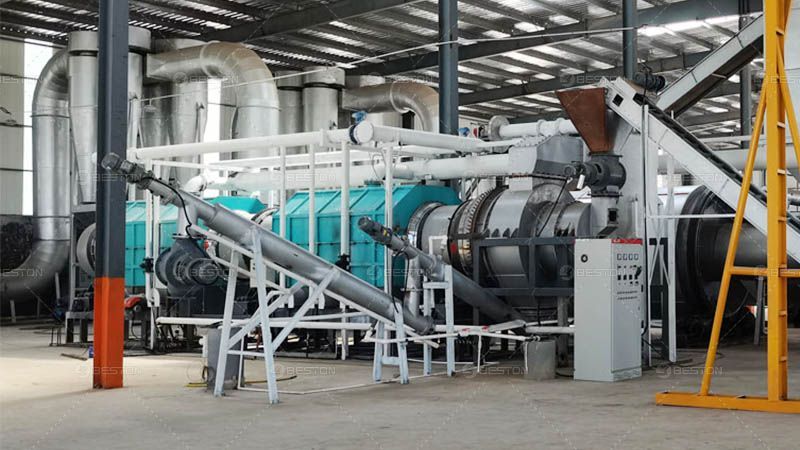Biomass Pyrolysis Technology: Revolutionizing Waste Recycling

Waste management has long been a pressing issue worldwide, with the accumulation of organic waste posing significant environmental challenges. However, the advent of biomass pyrolysis technology has brought about a revolution in waste recycling, offering a sustainable solution to the problem. In this article, we delve into the intricacies of biomass pyrolysis and explore how it is reshaping the landscape of waste management.
The Essence of Biomass Pyrolysis
Biomass pyrolysis is a thermochemical decomposition process that converts organic materials into valuable products such as biochar, bio-oil, and syngas in the absence of oxygen. This process involves subjecting biomass feedstock, including agricultural residues, wood chips, and municipal solid waste, to high temperatures ranging from 400°C to 800°C.
During pyrolysis, the biomass undergoes several stages of transformation. Initially, volatile compounds are released in the form of gases, which can be captured and utilized as renewable energy sources. Subsequently, the remaining solid residue, known as biochar, is rich in carbon and serves as a valuable soil amendment.
The Role of Biomass Pyrolysis Machines
Central to the success of biomass pyrolysis technology is biomass pyrolysis machine. These innovative devices are designed to efficiently process various types of biomass feedstock, maximizing product yield while minimizing environmental impact.
A biomass pyrolysis machine typically consists of several key components, including a reactor chamber, heating system, condensation unit, and product collection system. The reactor chamber is where the biomass feedstock undergoes pyrolysis, while the heating system provides the necessary heat to initiate and sustain the process.
Once pyrolysis is complete, the condensation unit allows for the recovery of bio-oil and other volatile by-products, which can be further refined for use as biofuels or chemical feedstocks. Meanwhile, the product collection system facilitates the extraction and packaging of biochar, a valuable soil conditioner with numerous agricultural benefits.
Advantages of Biomass Pyrolysis Technology
The adoption of biomass pyrolysis technology offers a multitude of advantages, both environmental and economic. Let's explore some of the key benefits:
1. Waste Reduction
By converting organic waste into valuable products such as biochar and bio-oil, biomass pyrolysis technology helps mitigate the environmental impact of waste accumulation while reducing the need for landfill disposal.
2. Renewable Energy Generation
The syngas produced during biomass pyrolysis can be combusted to generate heat and electricity, providing a renewable energy source that reduces reliance on fossil fuels and contributes to carbon emissions reduction.
3. Soil Improvement
Biochar, a by-product of biomass pyrolysis, enhances soil fertility, water retention, and nutrient availability, thereby improving agricultural productivity and promoting sustainable land management practices.
4. Economic Opportunities
Investment in biomass pyrolysis technology opens up opportunities for economic growth and job creation, particularly in rural areas where biomass resources are abundant. Additionally, the sale of biochar and bio-oil can generate revenue streams for businesses engaged in waste recycling.
Challenges and Considerations
While biomass pyrolysis technology holds immense promise for waste recycling and resource recovery, it is not without its challenges and considerations. Some of the key factors to be mindful of include:
1. Feedstock Availability and Quality
The success of biomass carbonization machine operations depends on the availability and quality of feedstock materials. Ensuring a consistent supply of biomass feedstock that meets the desired specifications is essential for optimal performance.
2. Technological Optimization
Continuous research and development efforts are needed to optimize biomass pyrolysis technology, improving process efficiency, product quality, and environmental sustainability. Innovations in reactor design, heating systems, and product refining techniques can enhance overall performance.
3. Environmental Impact
While biomass pyrolysis offers environmental benefits such as waste reduction and renewable energy generation, it is important to mitigate potential environmental impacts associated with the process. This includes minimizing emissions of greenhouse gases and pollutants, as well as ensuring responsible land management practices for biochar application.
Conclusion
Biomass pyrolysis technology represents a paradigm shift in waste recycling and resource utilization, offering a sustainable and economically viable solution to organic waste management. By harnessing the power of thermochemical conversion, biomass pyrolysis machines enable the transformation of waste into valuable products, ranging from renewable energy sources to soil amendments.
As the global community strives towards a more circular economy and sustainable future, biomass pyrolysis technology emerges as a key enabler of waste-to-resource conversion, driving innovation, environmental stewardship, and economic growth.
